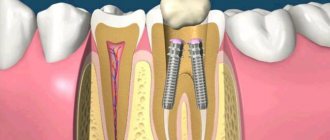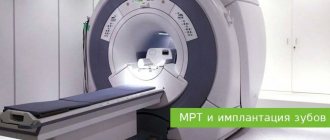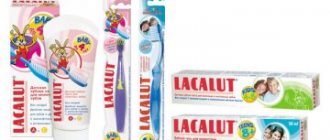Today, dozens of methods have been developed to restore and correct teeth, each of which is designed to quickly and painlessly solve a specific clinical problem. In cases of carious destruction, inlays have proven themselves to be the best, and if the tooth lacks support, pins come to the rescue.
The installation of a pin during dental prosthetics is carried out as follows: one end of the rod is screwed into the root canal, and a new beautiful tooth is attached to the other.
What is a dental pin
Dentists call a pin a special threaded rod.
With its help, one end of the pin is screwed into the root of the tooth, and a prosthesis is installed on the other end of the structure. The pin method of tooth extension is relevant in cases where the upper part of the tooth is severely damaged, and the root canals are in normal condition.
Advantages
- Aesthetics. The technology allows you to restore a beautiful appearance to severely destroyed and damaged teeth, including the front ones.
- Preservation of the tooth root, which does not happen with implantation.
- Functionality. Artificial pin teeth fully cope with the functions of natural ones, without causing any inconvenience and without requiring special care.
- Long service life. A tooth attached to a pin lasts more than 10 years.
Risks of pin prosthetics
- In the case when the pin is installed in a weakened root, thinning of the tooth walls with subsequent destruction is possible.
- Incorrect installation can lead to the spread of the carious process.
- Metal pins, although to a small extent, are still susceptible to corrosion.
- When removing a pin, it may be necessary to remove it along with the root.
- Individual intolerance to the materials from which the pin is made is possible.
Pin connections
According to their purpose, pin connections are divided into fastening, installation and guides .
Fastening joints , as the name implies, serve to rigidly fix parts (therefore, the pins sometimes used in such assemblies are called connecting pins). Additionally, they have the function of transmitting forces in the presence of axial forces and torque. This occurs in instrument making and machine tool manufacturing. Installation connections are provided by pins, which are supplied with screws or their equivalents. The main task of such connections is to maintain the location of parts during dismantling and reassembly. In such cases, only cylindrical parts are used, the installation of which structurally implies easy disconnection of the component parts of the mechanism.
Guide connections imply the possibility of movement of one or more parts of the structure (usually this means the translational movement of one element relative to another). Pin connections of parts vary depending on the geometry of each part, as well as the type and purpose of the structure itself. Typically, such assemblies are located near other fasteners, such as studs or bolts. If there are no other fasteners, two pins are usually installed, since there is no point in using more, except in cases where the components of the structure are subject to strong lateral loads. To ensure maximum reliability, the connections are placed at the maximum distance from each other, as well as from the geometric axis of the part.
What is a pin in a tooth for?
The decision on the advisability of pin extension is made by the doctor. Indications for using the pin method are:
- Destruction of the dental crown by more than 50 percent.
- Severe weakening of tooth enamel as a result of dental diseases or their treatment.
- The need to create a strong support for prosthetics.
- Extracting the tooth while the infection is being treated and then returning it to the socket.
Indications
Often, after some time, caries develops under the crown around the pin devices. As a result, the oral cavity requires repeated sanitation. And the main task of canal re-treatment is to remove the foreign body from the root canal. Indications for removal are pain under the crown, tooth decay and deep caries. Most often this concerns pins that were installed a long time ago.
One of the serious indications for re-treatment of canals is a foreign body, or rather a fiberglass rod or its fragments. Before starting this procedure, be sure to take an x-ray.
Contraindications
In some cases, the pin design is contraindicated. The possibility of installing pins for dental prosthetics is determined by the doctor after studying the medical history, conducting an examination of the damaged tooth and assessing the condition of the oral cavity.
In most cases, inflammatory processes in the oral cavity immediately become an obstacle to placing a pin. In this case, pin structures are installed after treatment.
Direct contraindications to the installation of pins are:
- absence of a tooth crown in the frontal part;
- narrowness of the root canals: width less than two millimeters;
- impossibility of giving a cylindrical shape to the root canal;
- insufficient root height;
- the presence of cysts and granulomas in the oral cavity;
- blood clotting disorders, including during menstruation in women;
- pregnancy;
- mental disorders;
- any dental diseases of an inflammatory nature in the acute stage;
- complete destruction of the tooth crown.
If a tooth hurts after installation, what should you do?
When a damaged tooth is restored, tissue may be destroyed. Therefore, sometimes the patient feels that the treated tooth hurts. If there was no pain before the procedure, and the tooth has been depulped for a long time, then the pain may arise due to the fact that the canal was entered too deeply. Then it is worth taking an x-ray to determine the cause of the pain.
It happens that pain occurs due to an allergy to a certain material. It can also manifest itself as deterioration of the condition, hyperemia, stomatitis.
Types of pins in dentistry
Dental pins vary in material, elasticity, fixation method and shape. The doctor selects a suitable design after a thorough examination, conducting the necessary studies and interviewing the patient. To make sure that there are no contraindications to installing the rod and that the width and depth of the canals are sufficient, the doctor must conduct an X-ray examination.
By material
- The anchor pin is the most popular in dentistry. This is due to the fact that it helps restore teeth with the maximum degree of crown destruction. The condition of the tooth root is extremely important: the pin can only be installed if it is intact and healthy. The product is made from an alloy of various metals: stainless steel, brass, palladium, titanium and even gold. Due to their high strength, lightness and low cost, titanium pins are most often used in dentistry. The main advantage of the anchor pin is the reliable retention of the restored part of the tooth and the possibility of further installation of dentures.
Disadvantages include susceptibility to corrosion, difficulty in removal and visibility. Anchor pins can be installed either passively or actively. - Fiberglass pin is the second most popular. Its difference lies in its high elasticity, hypoallergenicity and easy removal. The structure is made by dipping fiberglass into a plastic mold in such a way that an equivalent load is created on the hard tissues of the tooth. Visually, the fiberglass pin is almost invisible (see photo), since its color matches the enamel pigment. The disadvantage of the product is the 15 percent probability of destruction of dental tissue.
- Carbon fiber dental pins are very elastic, which reduces the load on the tooth root and prevents canal fracture. The structure of the material is close to the dentin layer of a natural tooth, making the product strong and durable.
- Parapulpal rods are made of a metal alloy and coated on the outside with polymer. They are used primarily for reinforcing filling material with a tooth cavity. They are inserted into hard tissues without penetrating the pulp. On the one hand, this eliminates the possibility of bacteria penetrating inside and developing inflammation, on the other hand, it limits the range of applications.
By elasticity
- Elastic pins better protect the tooth from fractures and impacts.
- Inelastic ones are preferred for supporting restorative structures, prostheses and bridges.
Pin Shape
When choosing the shape of the rod, the doctor proceeds from the individual shape of the root canal. The following rod shapes have been developed:
- conical;
- cylindrical;
- cylindrical-conical;
- screw.
Installation methods
- Active. The rod is screwed into the root of the tooth using a thread and is used as a support for a full crown.
- Passive. The rod is inserted and fixed into the root canal using special cement; it does not need to be screwed in. The strength of the structure is lower, but this method is more gentle on tooth tissue.
What is the procedure for removing the pin?
At the beginning of the procedure, a rubber dam is installed (latex scarves that are fixed on the teeth with special metal clamps, “clamps”; they are used to isolate the working field). After this, the tooth is thoroughly cleaned of the old filling material to release the pin rod. Then the rod is carefully processed with an ultrasonic instrument, while the pin is gradually loosened and removed from the canal, trying to preserve the tooth tissue as much as possible.
The anchor pin rod is also previously freed from the seal. Then they loosen it with ultrasound and carefully twist it out of the dental cavity.
Parapulpal rods are much easier to pull out than other types of pins. They are not inserted deep into the canal, so no deep intervention is required to remove them. In most cases, it is enough to grab the end and remove it by slightly loosening it. It is not necessary to use ultrasonic devices.
Installation of pins for dental prosthetics
Installed pin
Preparations for the installation of pin structures should not be made on the day of the operation, but during a preliminary consultation. After the dentist has determined the feasibility and possibility of pin prosthetics, he must analyze in detail the condition of the tooth and study the thickness of its tissues. Taking into account all factors, the doctor selects the optimal materials and types of fastening.
If inflammatory processes and any other pathologies that may complicate the operation have been identified, they are treated.
After this, additional inspection is required. When the doctor is convinced that there are no contraindications, immediate preparation for prosthetics will begin.
The day before the installation of the pin, it is recommended to undergo a teeth cleaning procedure to remove stones and plaque. This will help minimize the number of bacteria that can get onto the wound surface after manipulation. You should not eat for six hours before the pin is inserted.
Procedure
First of all, an injection of anesthesia is injected into the gum to numb the area of work. After the anesthesia has taken effect and the doctor has checked the surface for susceptibility, installation work begins. The dentist prepares the root canal, removes nerves, cleans and, if necessary, widens the canal. The work area is treated with an antiseptic solution.
If a passive pin is used, the channel is pre-filled with a cementitious mixture, and the rod is immersed in it. The active pin is screwed into the channel, and the voids are filled with a polymer composition. For better fixation, the solution is dried with a halogen lamp.
Photo: how to place a pin in a tooth
When the rod is screwed in and securely fixed, a pre-made artificial tooth prosthesis is placed on it. Temporary cement is used for fixation; this is done in order to test the material for rejection. If the surrounding tissues of the oral cavity reacted normally to the foreign element, after a week the denture is placed on a permanent basis. If necessary, the doctor adjusts it using grinding. After installing the pin, the patient should not have the slightest discomfort,
the further outcome of treatment depends on strict adherence to the dentist’s recommendations.
Rehabilitation
The first time after installing the pin, you must strictly adhere to a number of restrictions and recommendations. Only the doctor who performed the treatment can say how long the rehabilitation period will last. For the entire period of rehabilitation you should:
- Eliminate from the diet hard and viscous foods that require active chewing movements. Food should be soft or even ground.
- On the first day you should not brush your teeth, only rinsing is acceptable. In the future, you will need to give preference to brushes with soft or medium bristles.
- Avoid foods and items that can damage the integrity of your teeth: nuts, seeds, toothpicks.
- Do not miss visits to the dentist and strictly follow individual recommendations.
Methods for fixing pins
There are two main ways in which the post is secured to the patient's jawbone: active and passive.
Method one
The active method is implemented with a pin fixed in dentin. The part of the rod that enters directly into the bone, as a rule, has a thread that allows the pin to be firmly and firmly fixed in the bone tissue.
This type of fastening is well suited for cases where there is a need to restore a completely destroyed tooth. A significant disadvantage of the active method is the excess stress it creates during the installation process, which can cause tooth fracture.
Method two
The passive type of pin fixation involves securing it inside the root canal using a special substance. This option is used in cases where, after treatment, additional strengthening of the tooth is necessary.
How much does it cost to install a pin?
The price for installing an artificial tooth on a pin depends on the region and the type of product chosen. In Moscow clinics, dentists traditionally charge more for dentures. A titanium anchor per tooth will cost the least; a fiberglass pin will cost 2.5 times more.
It is important to proceed from the advisability of installing one type of pin or another. It is necessary to take into account what will be best for the teeth, in which part of the jaw the manipulations are performed, whether subsequent prosthetics are planned, what is the budget for treatment. An experienced dentist will help you choose the best option.
Alternative strengthening options
An adequate alternative to parapulp rods can be restorative inlays (for extensive damage to the crown) or veneers (for minor damage to the front teeth). A filling, in principle, can also be considered as an option - but its service life is shorter, it will quickly sag or chip.
Only until December 25 South Korean implant Osstem - from 18,500 rubles.
Hurry up to sign up for a free consultation and lock in promotional prices.
Call now or request a call
Opening hours: 24 hours a day - seven days a week
Stump inlays are an optimal replacement for in-canal structures, because... they are stronger and more durable, and distribute the chewing load much better.
Read on the topic: what are dental inlays and who are they suitable for? A complete list of designs and materials for their manufacture in one article.
Does it hurt to put a pin in a tooth?
It doesn't hurt to put a pin in a tooth
, since with such prosthetics local anesthesia is used. Once the procedure is completed and the anesthesia wears off, there may be some discomfort, but there will be no pain even after the procedure.
Before making a final decision in favor of prosthetics using a pin, you need to consult with the dentistry department. The doctor must explain how the procedure will take place, why to insert this or that material, what the consequences are and whether there are guarantees for the installed structure. The pin is installed for a long time, so it is important to choose an experienced specialist who will select the right material and professionally carry out prosthetics.
Purpose
Pin connections are widely used in mechanical engineering, medicine, instrument making and other industries. It is used in the automotive industry and in the manufacture of household appliances, wherever fixed detachable joints are made.
The use of pins simplifies the fixation of parts during repair and processing.
Conical clamps are used to secure elements of body parts during their joint processing. For example, the gear housing is first processed along the parting plane. Then they drill along the flanges, install pins and bore holes for shafts and bearings with H7 accuracy.
After any number of disassemblies, all treated surfaces are precisely aligned.
Possible complications
Installation of the anchor pin is usually quick and without complications. Problems may arise due to the patient's allergy to metals. In such a situation, swelling usually develops, the gums in the area of the restored tooth turn red, and itching appears. If such symptoms are detected, you should immediately contact your dentist to remove the structure. If a specialist made mistakes during the treatment process or carried out insufficiently high-quality antiseptic treatment, there may be a risk of developing an inflammatory process - stomatitis, periodontitis.
Swelling after treatment may be a sign of complications
Immediately after the procedure, when the anesthesia wears off, discomfort and moderate pain may appear - this is a completely natural phenomenon, a reaction to tissue injury that inevitably occurs during root canal treatment and restoration of a damaged tooth. The symptoms will go away after a couple of days, but in the meantime, pharmaceutical painkillers will help alleviate the condition. If the pain and intensity of symptoms only increases, it is better to see a specialist. Perhaps the whole point is damage to the walls of the root canal.
Pin selection criteria
The composition of the pins is steel and galvanized coating, which protects against rust. In humid or salty environments, it is recommended to use stainless steel pins.
The pins differ in length and cross-section.
Pin:
- length from 13-50 mm,
- cross section 1.00 x 1.25 mm.
Application: fastening decorative elements, picture frames, fastening cabinet drawers, fastening wooden elements, furniture making.
Pin:
- length from 19 to 63 mm,
- cross section 1.5 x 1.65 mm.
Application: nailing floor boards, fastening massive interior finishing elements.
Pin:
- length from 38 to 63 mm,
- cross section 1.7 x 2.2 mm.
Application: nailing floor boards, fastening massive and heavy structural elements of interior decoration.
What are the advantages and disadvantages of pins?
To make the optimal choice of orthodontic design, you must weigh all the pros and cons of installing a pin in the tooth. After all, you will have to live with this for many years, preferably without discomfort and all sorts of complications.
A tooth that is more than half destroyed cannot be restored or filled, especially if it is chewable. In this case, the only way out is complete removal and placement of the implant. But dentistry has come up with an ideal alternative to both operations - a pin tooth. It is less painful, less time-consuming and much more economical. This is the main advantage of the pin.
But this is not all the advantages. In addition to saving a hopeless tooth, pins:
- do not damage or violate the integrity of neighboring teeth;
- suitable for installation anywhere in the dentition;
- allow you to restore a damaged tooth almost from scratch, returning it to its original appearance;
- have a long service life - from 10 to 20 years;
- are made from different materials, which allows you to choose for each individual case;
- withstand heavy loads when chewing food;
- completely restore the functionality of a damaged tooth.
Like any dental structure, pins have some disadvantages. After constant significant loads, they can gradually destroy the tooth root and crown, which will ultimately lead to its complete removal. The inelasticity of some materials contributes to this. Sometimes caries develops around the knitting needle, which cannot be seen during examination. This situation is excluded if the installation was carried out efficiently and professionally.
Very rarely, a pin can cause an allergic reaction followed by rejection. In this case, you will have to remove it and replace it with another material or install an implant. And, of course, the price for installing a pin is not small, so you need to be prepared for significant expenses. Although, a beautiful smile and lack of discomfort are worth it.
In any case, the advantages of the pins are much greater than the disadvantages. And the selection of a tooth restoration method remains up to the doctor. In most cases, it all depends on the specific situation and the severity of the tooth problem. Trust professionals who know what is best for your teeth.
previous post
Important recommendations after tooth extraction: food, drink, alcohol, smoking
next post
Caring for a rooted tooth
After the procedure, the patient is advised to carefully monitor the condition of the oral cavity. For a week, the patient is advised to eat exclusively pureed soft foods. After eating, the gums and tooth canals should be cleaned of food debris using dental floss. This hygiene procedure will reduce the risk of inflammatory processes.
Dentists advise distributing the load on the dentition evenly. The patient should refrain from opening bottle caps with a ground tooth or cracking nut shells.
If the tooth decay is significant, then there is no point in saving it. But increasingly, dentists resort to extreme measures only in rare cases. Doctors have learned how to save a tooth that would have been considered hopeless just a few years ago. It should be remembered that for the health of the body it is better to restore a tooth than to remove it. A dental pin is one of the most common and effective methods for reconstructing damaged canals.
Sources used:
- Handbook of Dentistry / Ed. A. I. Rybakova. - M., 1993.
- Seifollahi M. Preparation of lateral teeth for all-ceramic inlays // News of Dentistry: article. — 2008.
- Tabs in dentistry Wikipedia article
Repair
In addition to crushing or shearing, in connections of this type, defects such as wear of the hole and the appearance of cracks in the parts themselves can also occur. It is not allowed to further operate the units if any of the four problems occur. Repair of the unit must be carried out. In any case, a unit with a defect will not work for very long.
The actual repair of pin connections is, of course, carried out in compliance with certain standards. In most cases, defective pins are discarded and replaced with new ones. However, GOST still allows, for example, to expand worn holes for another larger pin. It is also allowed to weld old holes and drill new ones in their place.
Features of installation in the node
The parts are drilled for connection with a pin, as already mentioned, in the assembly. In some cases, these elements are additionally fixed to avoid falling out. This is done, for example, when installing dismountable connections. In this case, additional fixation is provided with a ring of 0.5-0.8 mm wire.
In non-separable connections, the pins are usually cored. But in some cases, products with drilled ends can also be used. After assembly, such pins are flared.
When using conical products, in some cases the self-rejection condition may not be met. This happens quite often, for example, in units subject to vibration or operating under conditions in which the temperature changes sharply. In such connections, conical pins must be secured additionally.











